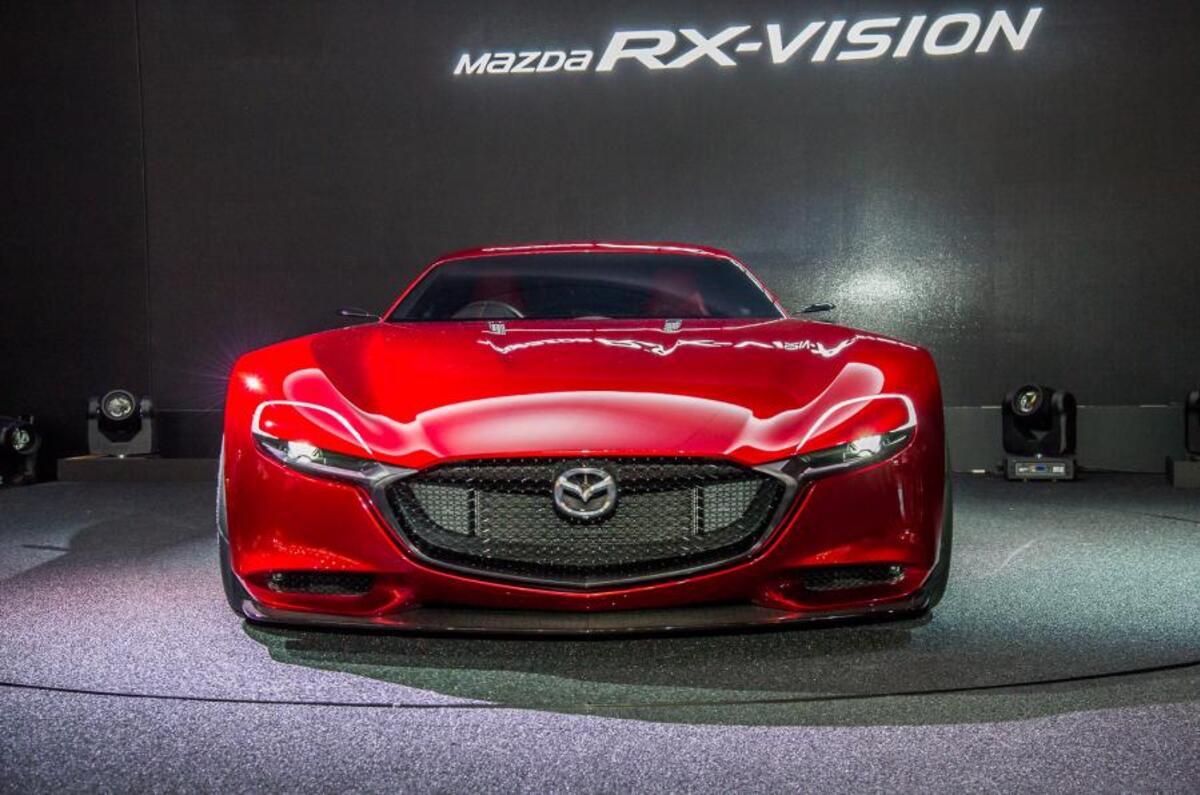Mazda’s key personnel had been well briefed not to give too much away on the specifics of the RX-Vision concept car – and indeed the production car that will follow it – but they said enough for as full a story on it as you’ll read anywhere, with some informed speculation thrown in. You can read that here.
One particular detail that R&D chief Kiyoshi Fujiwara went into was on the technological breakthrough in the rotary technology that now makes its return a possibility.
For typical internal combustion engine development and the study of the combustion cycle itself, key engine components are replaced with glass so engineers can see inside at exactly what is going on. This technology was never available on rotary engines before. So Mazda went out and developed it.
“For normal gasoline engines, we can see exactly how the fuel is injected and how it burns,” said Fujiwara. “Thanks to that, we can see what happens and get more sophisticated computer analysis. All manufacturers use this technology.
“But for rotary, no one had made it… so we went out and made the model for ourselves. Through the glass, we can see how the fire spreads and is burned. We put that into computer analysis, and now we can visually see the fuel economy and the performance of the exhaust gases.
“We can see the shape of the parts; whether the injection is good or bad, we can see it and analyse it. Based on the things we have learned, there is still room for even more modifications.”
Fujiwara said the analysis discovered that the 'ceiling' of the casing was one of the key reasons why the rotary engine was never all that economical, as well as the basic shape of the engine’s outer casing. “In order to fix the problem, we can now have computer analysis. Based on this, we can improve the ceiling and change the shape, the root causes we have with the problems.”










Join the debate
Add your comment
It was also very thirsty for
the ghosts of Rx8s past
The rotor seals either need to be an easy to replace item, or have a lifespan >200000 miles. People dont want to spend £25k on a car with a 40-60k mile lifespan.